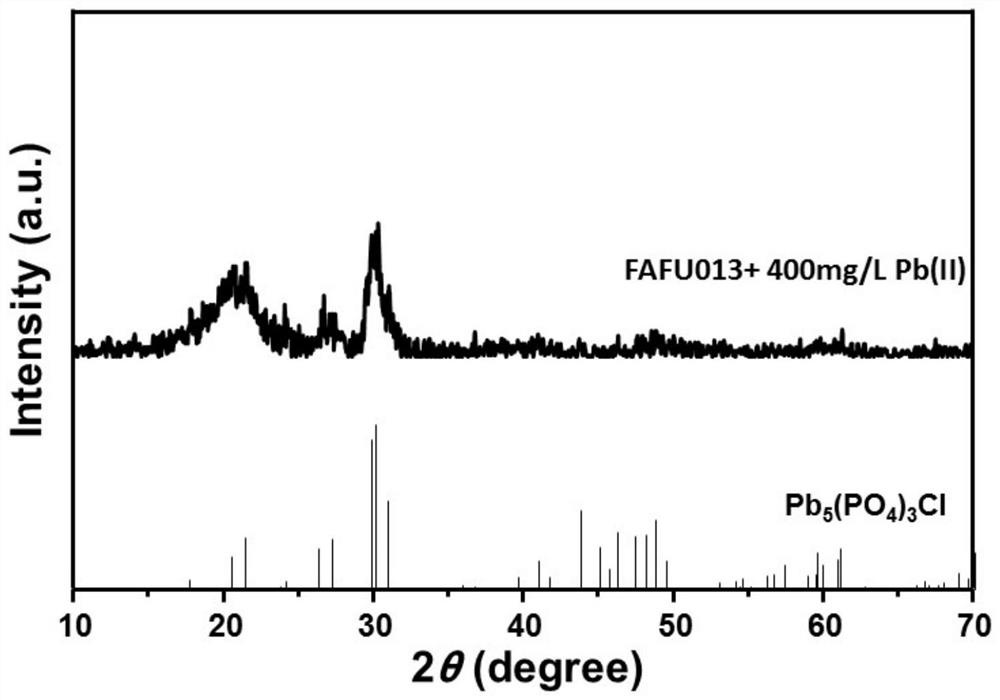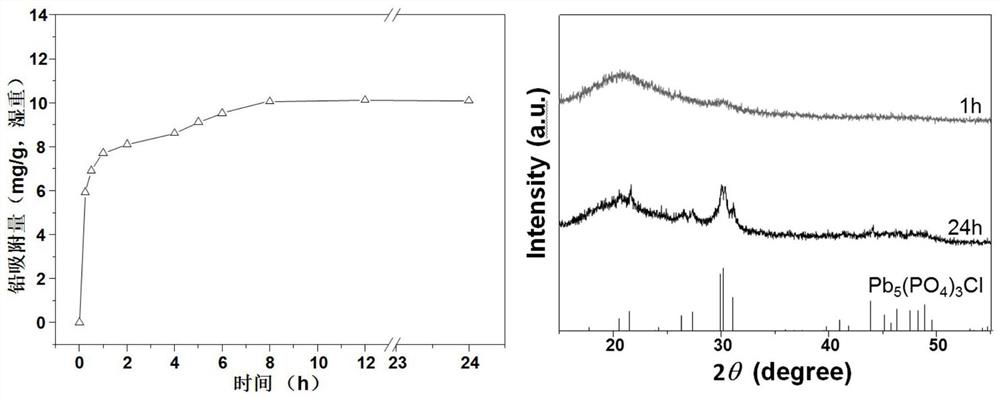A thermophilic Pb ore-forming bacterium and its method for passivating Pb in sludge high-temperature composting
A technology for high-temperature composting and Thermus thermophilus, which is applied to sewage/sludge fertilizers, microorganism-based methods, biochemical equipment and methods, etc. Temperature, the effect of shortening the fermentation cycle
- Summary
- Abstract
- Description
- Claims
- Application Information
AI Technical Summary
Problems solved by technology
Method used
Image
Examples
Embodiment 1
[0023] Example 1 FAFU013 strain screening and identification
[0024] (1) Screening of FAFU013 strain
[0025] Weigh 5g of sludge compost samples in the high temperature period (<70°C) into a conical flask filled with 15 glass beads and 50mL of sterile water, place on a shaker and vibrate at 180rpm for 1 hour to fully disperse the samples, and then place them at 75°C Next, let stand for 3 hours.
[0026] Pipette 500 μL of high-temperature enrichment solution and low-fold dilution solution, and spread evenly on the improved YTPG solid medium. Put the evenly coated plate upside down into a sealed bag, and place a petri dish filled with distilled water at the same time, seal it and place it in a 75°C incubator for cultivation. After the colonies grow, carefully observe the characteristics of the colonies to determine the different types of strains, and separate and purify by streaking on the good YTPG solid plate medium until the pure colonies of FAFU013 are obtained. Transfer...
Embodiment 2
[0032] Example 2 Tolerance of FAFU013 strain to lead and its mediated mineralization of lead
[0033] (1) Pick colonies from the well-preserved Thermus thermophilus FAFU013 plate medium, inoculate into DSMZ Medium 74 liquid medium, and activate and cultivate for 16 hours at 75°C and 180 rpm. The activated Thermus thermophilus FAFU013 was inoculated to contain 50mg / L, 100mg / L, 200mg / L, 300mg / L, 400mg / L Pb(II) (Pb(NO 3 ) 2 ) in DSMZ Medium 74 liquid medium, cultured at 75°C and 180 rpm. By detecting the OD600 value of the bacterial solution, the influence of different lead ion concentrations on the growth of Thermus thermophilus FAFU013 was determined. The result is as figure 1 As shown, the results show that 400mg / L Pb(II) has no effect on the growth of Thermus thermophilus FAFU013.
[0034](2) After culturing for 48 hours, centrifuge at 12,000 rpm for 10 minutes, and take the supernatant to measure the remaining lead content. The cells obtained after centrifugation were w...
Embodiment 3
[0035] Embodiment 3 FAFU013 mediates the mineralization of lead ions in lead-containing wastewater
[0036] (1) Take lead-containing wastewater from an enterprise in Fujian (the basic properties of the water sample are shown in Table 1), and adjust the pH of the wastewater to 5.5-6.5.
[0037] Table 1. Basic properties of lead-containing wastewater tested
[0038]
[0039] (2) The activated Thermus thermophilus FAFU013 was inoculated into DSMZ Medium 74 liquid medium at 1%, cultured at 75° C. and 180 rpm for 48 hours, and the cells were collected by centrifugation.
[0040] (3) According to the dosage of 10g / L (wet weight), add the cultured FAFU013 bacteria to the lead-containing wastewater, and act for 24 hours at 70°C with a stirring speed of 180-220 rpm. (AAS) was used to determine the lead content absorbed by FAFU013 cells, and the transformation of lead-containing minerals mediated by FAFU013 cells was determined by XRD.
[0041] The results showed that Thermus therm...
PUM
 Login to View More
Login to View More Abstract
Description
Claims
Application Information
 Login to View More
Login to View More - R&D
- Intellectual Property
- Life Sciences
- Materials
- Tech Scout
- Unparalleled Data Quality
- Higher Quality Content
- 60% Fewer Hallucinations
Browse by: Latest US Patents, China's latest patents, Technical Efficacy Thesaurus, Application Domain, Technology Topic, Popular Technical Reports.
© 2025 PatSnap. All rights reserved.Legal|Privacy policy|Modern Slavery Act Transparency Statement|Sitemap|About US| Contact US: help@patsnap.com



